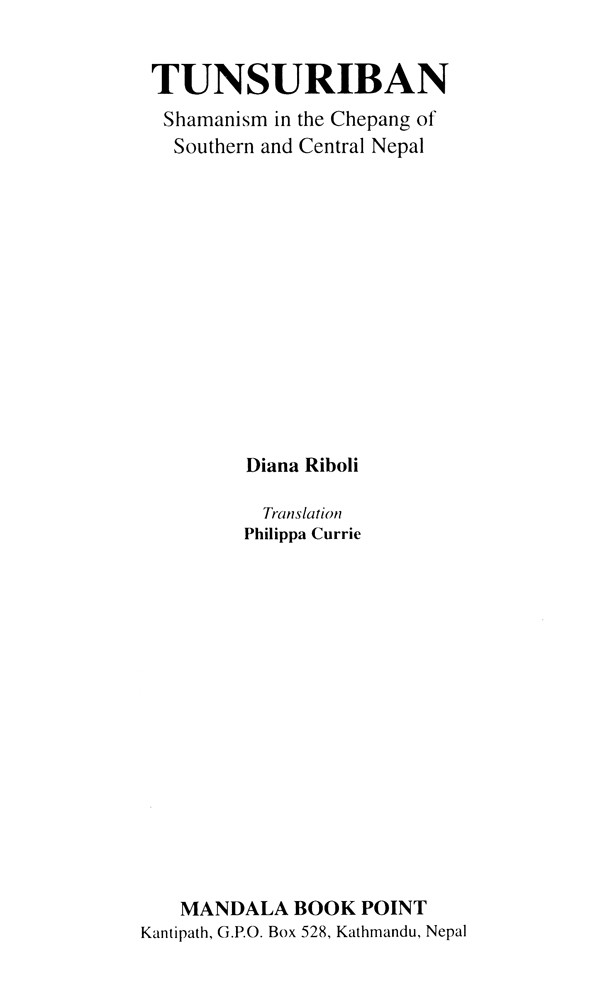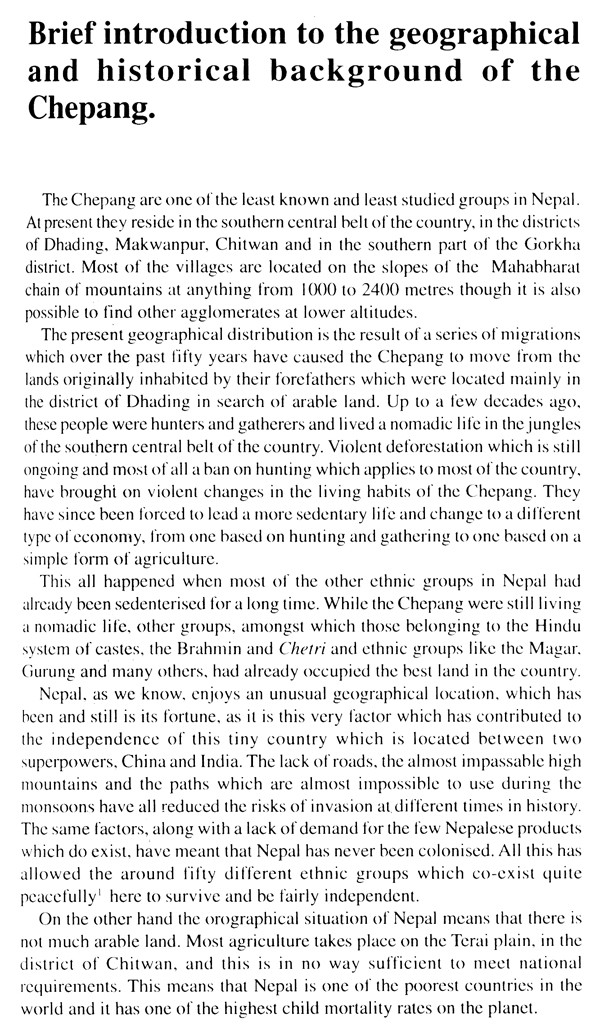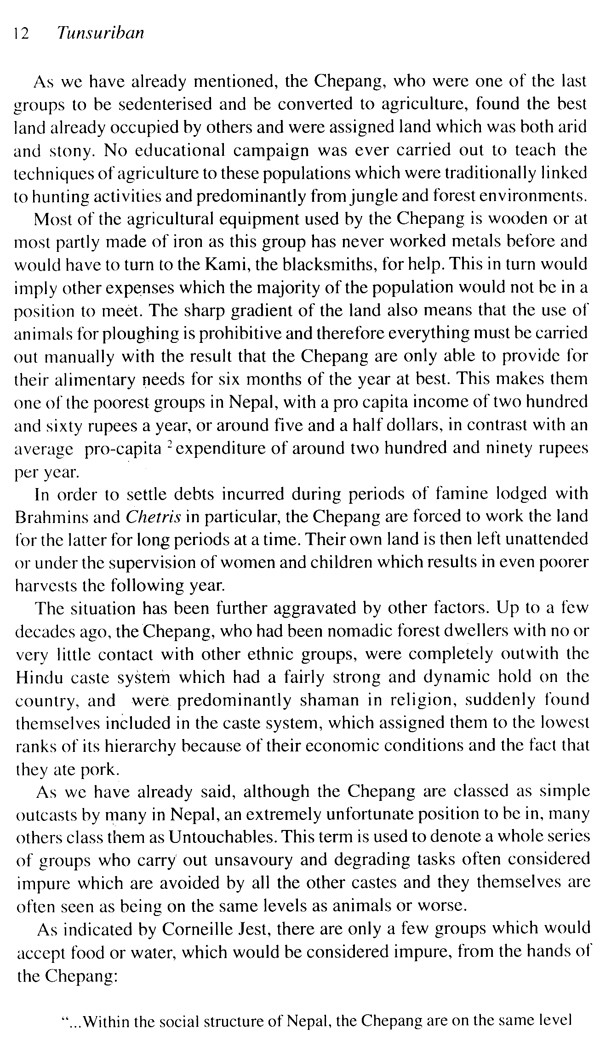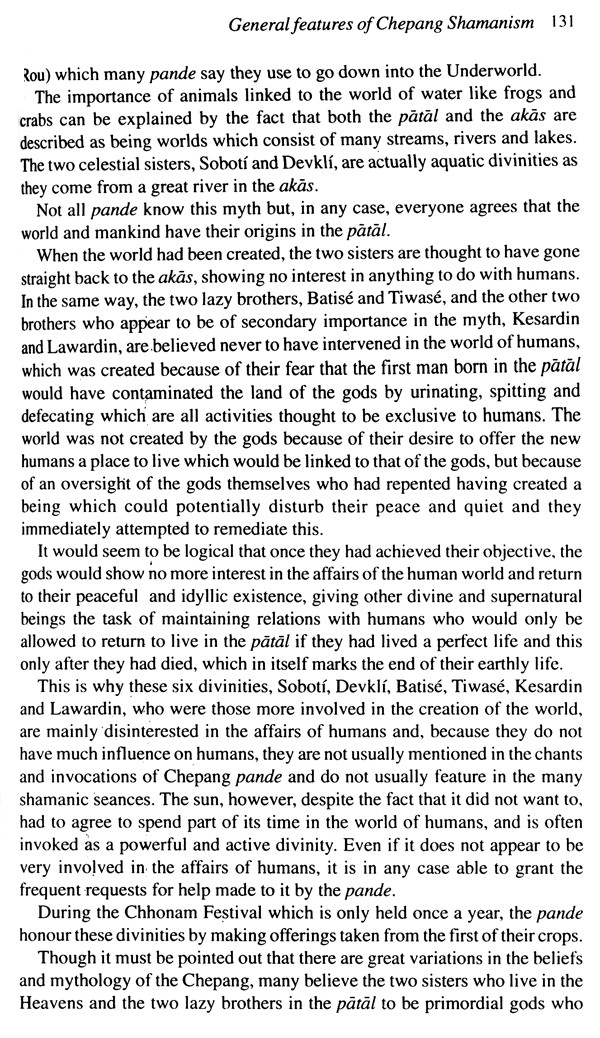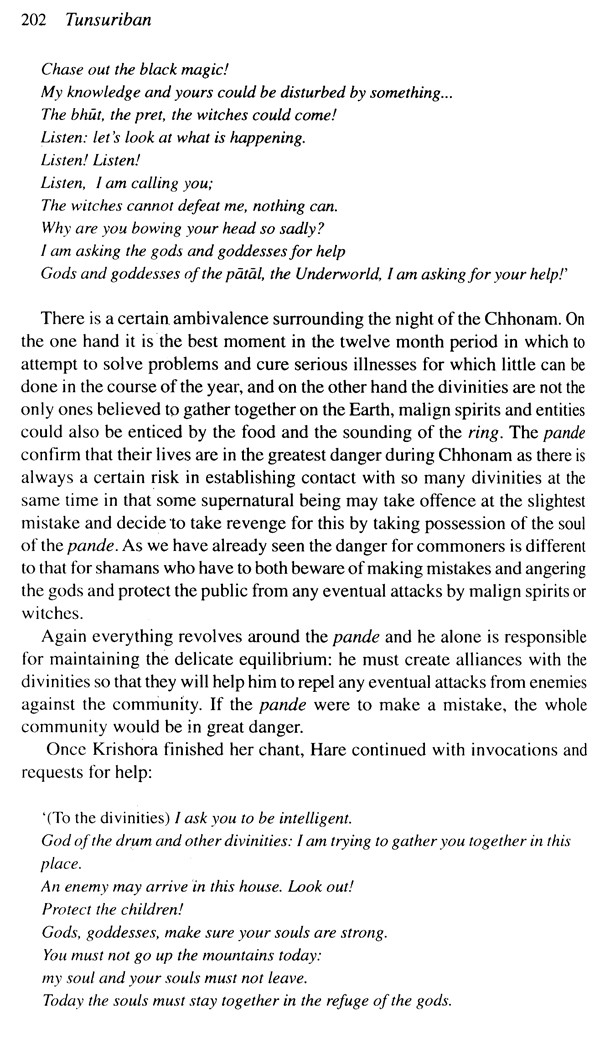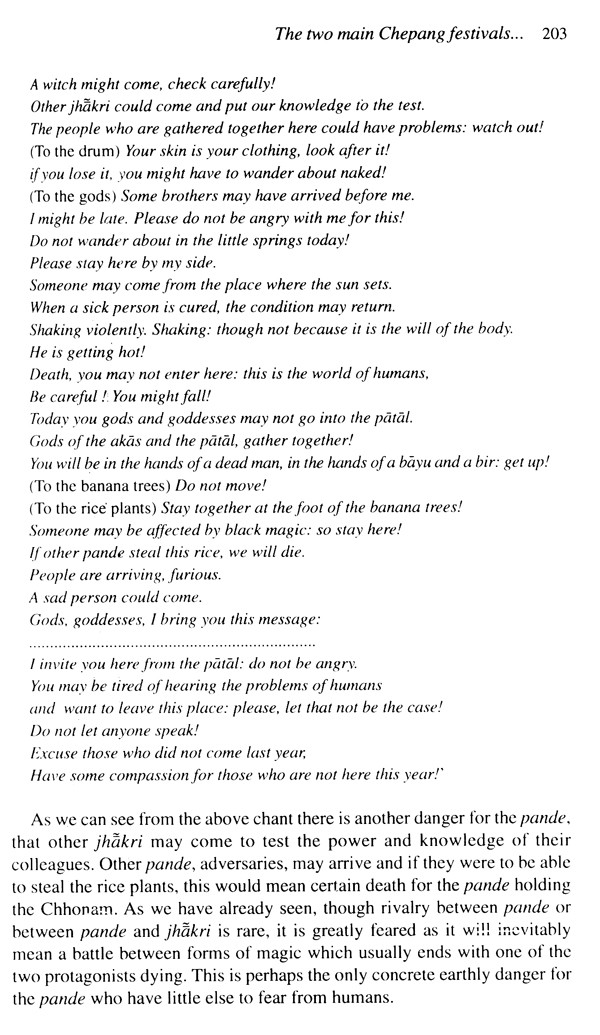
Tunsuriban- Shamanism in the Chepang of Southern and Central Nepal
Book Specification
| Item Code: | UAT786 |
| Author: | Diana Riboli |
| Publisher: | Mandala Book Point, Nepal |
| Language: | English |
| Edition: | 2000 |
| ISBN: | 9993310050 |
| Pages: | 260 |
| Cover: | PAPERBACK |
| Other Details | 8.50 X 5.50 inch |
| Weight | 330 gm |
Book Description
During this time she has undertaken many field expeditions. six of which came under the auspices of the Italian State National Centre for Research (C.N.R.), within the framework of a research project into the condition of ecstasy in the Himalayas.
This volume represents the culmination of her research and also forms the basis of her ph.D. thesis for the University of Rome "La Sapienza."
She has previously published many articles in different well known European reviews and has been a contributing author in the book 'Tremore e Potere. La condizione estatica nello sciamanismo himalayano." published in Italy in 1995.
Her present work focuses on one of the lesser known, ethnic groups of Nepal: the Chepang and more particularly on the form of Shamanism practised within this group.
The situation in which this ethnic group finds itself at present may seem somewhat paradoxical: on the one hand the Chepang are seen by many people as outcasts at best and more often as Untouchables though the pande -- the Chepang shaman are held in great esteem being considered among the most powerful shamans in Nepal. The Chepang pande call themselves tunsuriban, a word which describes their faculty to move freely in both the celestial and chtonious kingdoms.
The whole life of the Chepang revolves round the presence of the pande who is the key figure in the community. He, or she, is responsible for communicating with the spirits, gods and forefathers and he is also a diviner, therapist and psychopomp.
The study of this ethnic group which hardly any projects have dealt with required many years of intense field work and involved more than thirty pande.
The hospitality and trust shown by the local people has greatly facilitated anthropological research though this has been complicated by difficult. geographical, climatic and sanitary conditions. It is, however, these conditions which have allowed the country to remain isolated and independent despite its geographical location between the two superpowers, China and India.
The remoteness of villages and communities has allowed cultures and secular religions to be preserved. Despite inevitable contact with other greater and more complex religions, these have retained their autonomy and have even generated extremely interesting new cultural and religious forms. Difficulties encountered in carrying out field research have resulted in there still being ethnic groups which have not been studied in any detail. Some of these groups may even be almost unknown.
This work will focus on one of these ethnic groups; the Chepang or as it is known at present, and which we will examine later - the Praja and more particularly the form of Shamanism present in this group.
As we know, the term Shamanism is held to mean a group of beliefs and ritual practises which are based on the possibility of there being a direct relationship between men and divinities or spirits. This relationship is effected by a religious expert mainly through alterations in states of consciousness which will from now on be referred to as trances!
Shamanism can be found in many parts of the world: from Northern Eurasia to North and South America and thereon also in Australia and Ocea nia. The origins of Shamanism are probably to be found in Siberia and Central Asia, from where, according to Ugo Marazzi, the two most important forms of sincretistic Shamanism derive:
"Central Asia and Southern Siberia have, in the course of history, been open to influences by almost all the major religions (Christianity, Mazdaism. the Jewish faith, Buddhism, Islam, Manichaeism) and to the sedentary cultures of the southern peoples, Islam and Buddism have had a deep and lasting influence on the culture and religious concepts of Central Asia, mainly on the Turks and Mongols.
**Contents and Sample Pages**
